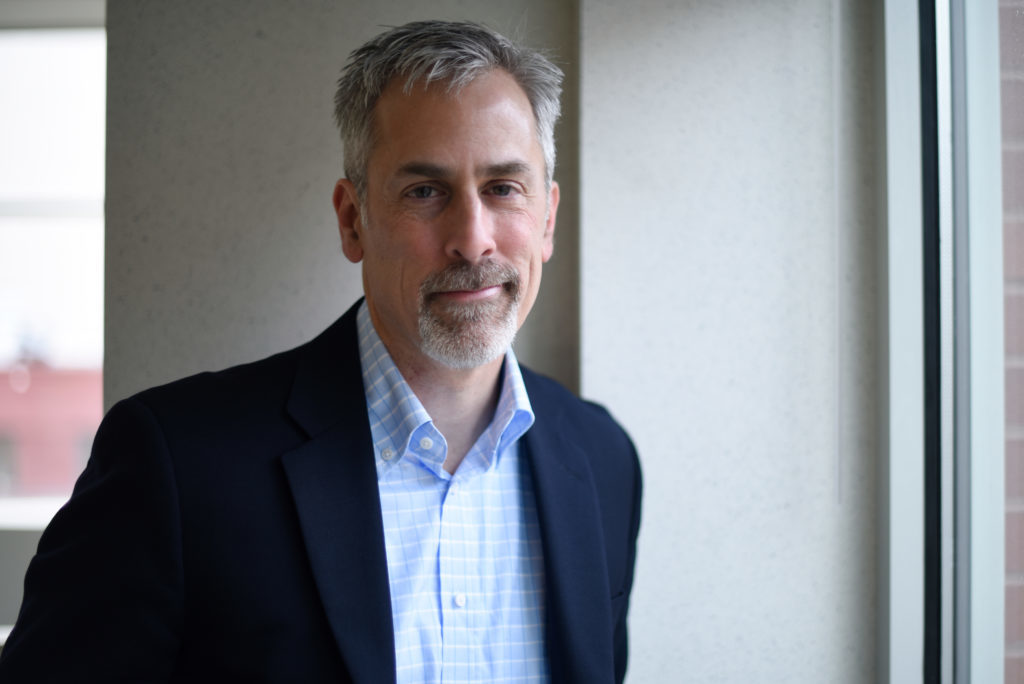A media professor secured a more than half-million-dollar grant to expand his research mapping the political and cultural bubbles that divide the United States.
Dante Chinni, a research professor and the director of the School of Media and Public Affairs’ American Communities Project, has been collecting data and reporting on demographic differences among counties in the U.S. since 2008. This month his “brain child” received a $699,600 grant – awarded by the Robert Wood Johnson Foundation – to map how health, economic standing and media consumption impact life in American communities.
There are stark divides between various counties in the U.S., and studying the types of communities can help researchers understand a wide range of political, cultural and social issues, he said.
The American Communities Project groups every U.S. county into one of 15 “community types,” based on a breakdown of 40 demographic variables, ranging from race and occupation to political leanings. The types of communities – designed by Chinni and Iris Hui, a senior researcher at Stanford University – include Hispanic centers, college towns and graying America, according to the program’s website.
“I use the data to help me find the stories and see what we need to talk about,” Chinni, who writes a blog for The Wall Street Journal, said. “If you’re going to talk about communities you have to go out to the communities and talk to the people and see what it really looks like.”
Funding from the grant will help the project revamp the website and mine community datasets. The grant also includes travel money to send researchers to explore U.S. counties on the ground.
“Where you live says a lot,” he said. “I know we live in the age of the internet and people can do whatever they want wherever they are, but when you really start looking at the data about opinions and attitudes and what people actually do when they’re online, these community differences really rear their head.”
As a career journalist, Chinni has already traveled around the U.S., which is how he originally got the idea for the project in 2008. He said counties within states often have more demographic differences than counties far apart, creating distinct cultural environments that can be best understood through data analysis.
“I’d go out and talk to people and see what the stories were about. When you do that enough times you start to see a lot of similarities between places,” he said. “You realize it’s just all these little bubbles that you can explore.”
Working with the Robert Wood Johnson Foundation – the largest U.S. public health foundation – the project will focus largely on examining disparaties and similarities in public health, economic status and media consumption.
“The economics and media consumption go into creating the community and the community has an impact on the health,” he said. “When you use geography to look at the groups you are studying, so many things are overlaid.”
Research collected will be published in four reports. The first report, focusing on local level “health care and the quality of life” will be released in the fall, Chinni said. The remaining reports will be issued in 2019 on topics yet to be determined.
The project’s advisory committee will include data specialists from Gallup and the U.S. Census Bureau, Milken Institute School of Public Health faculty, a member from the Federal Reserve in St. Louis and a representative from the Robert Wood Johnson Foundation.
The group also plans to host panel discussions at GW – as well as in counties featured in the research – and to arrange video chats between community leaders to discuss local issues and solutions that have worked elsewhere.
SMPA Director Frank Sesno said the project will keep SMPA students and faculty up-to-date with the rapidly evolving media environment and the ways in which media, politics and culture shape American lives.
“This is research that will help people and policymakers burst the bubbles that currently define the nation,” he said in an email.
The American Communities Project will be working with health-related data from the Country Health Rankings and Roadmaps program, a collaboration between the University of Wisconsin Population Health Institute and the Robert Wood Johnson Foundation.
Marjory Givens, the deputy director of data and science for the County Health Rankings and Roadmaps program, said the data provided will look at factors like behaviors, the built environment and clinical care to draw conclusions about residents’ quality of life in various communities.
“Giving communities as much health information as possible, and in an easy-to-use format, opens the door to informed conversation and action,” she said. “With this information, communities can take an evidence-informed approach to addressing what matters in achieving health for all.”
Liz Konneker contributed to reporting.





